Rhode Island Reds
- January 22, 2024
- 0 comment
Rhode Island Reds are an iconic and beloved chicken breed that has left an indelible mark on American poultry farming. Known for their deep, lustrous red plumage, Rhode Island Reds are cherished for their friendly and docile personalities, making them a favorite choice for backyard poultry keepers and enthusiasts. Renowned for their exceptional egg-laying capabilities, these birds can produce over 200 brown eggs per year, making them a consistent source of delicious and nutritious eggs for households across the nation.
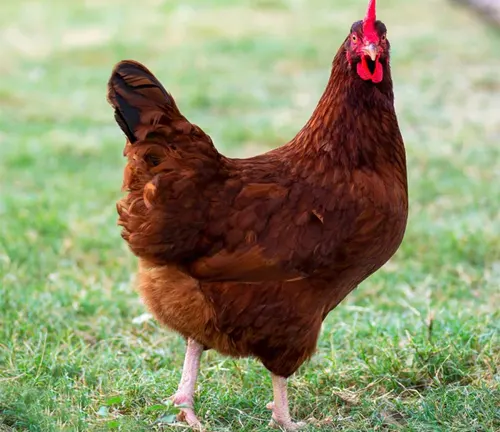
Beyond their prolific egg production, Rhode Island Reds are celebrated for their hardiness and adaptability to various climates, making them a reliable choice for poultry keepers in diverse regions. Whether you’re a beginner or an experienced farmer, these chickens are an excellent addition to any flock, offering a piece of American agricultural history and a delightful presence in your backyard.
| Characteristic | Description |
|---|---|
| Breed Size | Medium to large-sized |
| Feather Color | Deep, vibrant red plumage |
| Eye Color | Bright, alert, and often reddish |
| Personality | Friendly, docile, and sociable |
| Egg Production | Approximately 200-300 brown eggs per year |
| Egg Color | Brown |
| Lifespan | 5 to 8 years or more with proper care |
| Adaptability | Well-suited for various climates and regions |
| Dual-Purpose | Suitable for both egg production and meat |
| Special Features | Recognized for hardiness and ease of care |
| Breed Recognition | Officially recognized by the American Poultry Association |
| Ideal for Beginners | Excellent choice for novice poultry keepers |
| Historic Significance | Part of American agricultural history |
The History of Rhode Island Reds
Origins of the Breed
The story of Rhode Island Reds begins in the picturesque farms of Rhode Island in the mid-1800s. Farmers sought to create a chicken breed that excelled in both egg production and meat quality. These early breeders laid the foundation for what would become one of America’s most beloved poultry breeds.
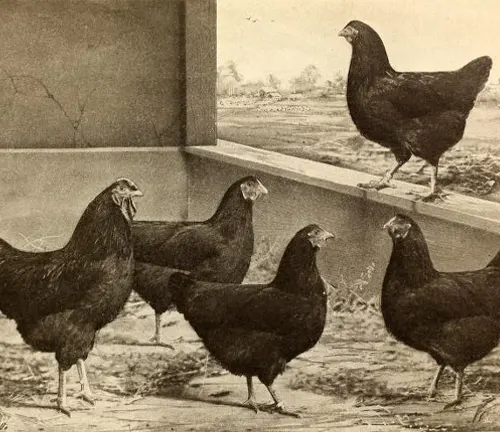
Selective Breeding
The journey to perfecting the Rhode Island Red was marked by meticulous selective breeding. Dedicated breeders focused on enhancing desirable traits, such as egg-laying capabilities, robust health, and vibrant plumage. This commitment to improvement paved the way for a breed that exceeded expectations.
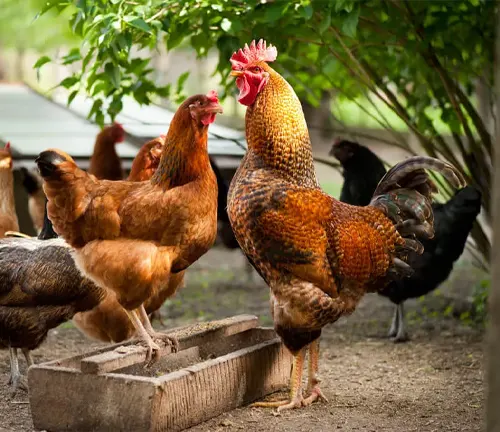
Recognition and Popularity
In 1904, the American Poultry Association officially recognized the Rhode Island Red as a distinct breed. This recognition catapulted the breed into the limelight, leading to widespread popularity among poultry keepers. These birds became synonymous with reliability and productivity.
Economic Significance
Rhode Island Reds played a pivotal role in American agriculture during times of hardship and war. Their consistent egg-laying abilities and delicious meat provided a vital source of sustenance for families across the nation. These chickens were more than just farm animals, they were lifelines.
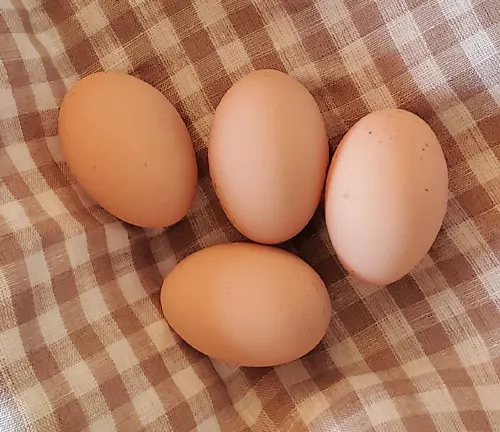
Characteristics of Rhode Island Reds
Appearance
Rhode Island Reds are known for their striking appearance. Their medium to large size, deep red plumage, and vibrant, bright eyes make them stand out in any flock. Their regal bearing and classic look harken back to a time when poultry farming was an art.
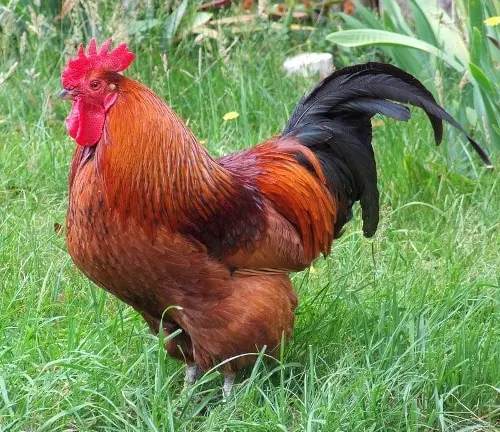
Personality
Beyond their looks, Rhode Island Reds are beloved for their friendly and docile nature. They are often considered the “gentlemen” of the poultry world, with a calm demeanor that endears them to their human caregivers. Their sociable attitude makes them excellent additions to backyard flocks.
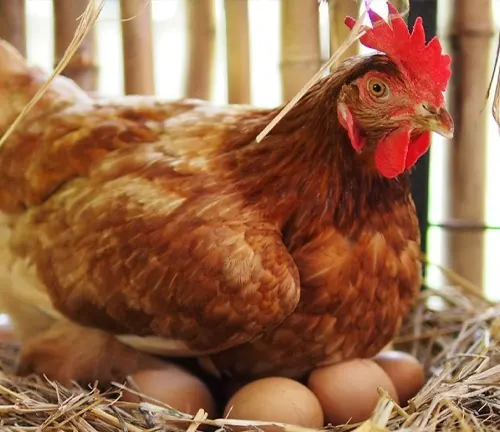
Egg Production
When it comes to egg production, Rhode Island Reds are unparalleled. Hens of this breed are capable of laying over 200 brown eggs per year, making them a favorite choice for those who value a constant supply of fresh eggs. Their eggs are not only abundant but also delicious and nutritious.
Caring for Rhode Island Reds
Housing Requirements
Providing suitable housing for Rhode Island Reds is essential for their well-being. A well-ventilated coop with ample nesting boxes and roosting perches is necessary to keep them comfortable and secure.
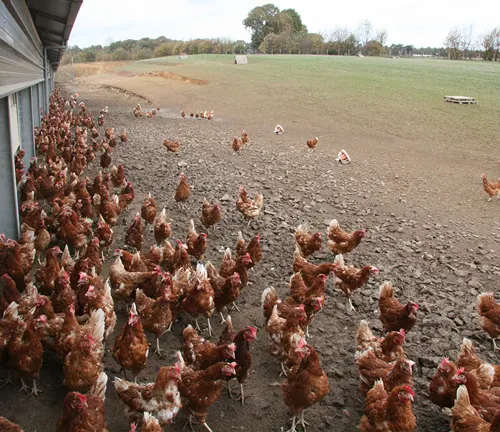
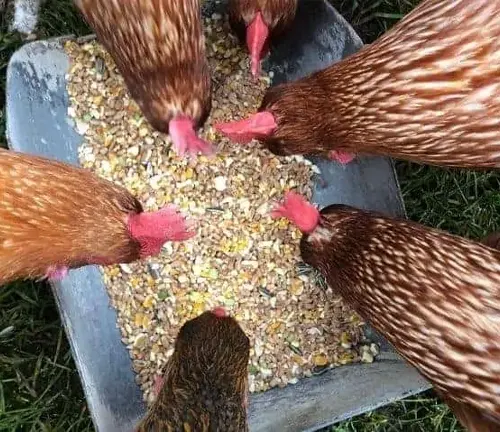
Feeding and Nutrition
Maintaining a balanced diet is crucial for the health and productivity of Rhode Island Reds. High-quality poultry feed, supplemented with fresh greens and clean water, ensures that they receive the nutrients they need to thrive.
Healthcare
Regular check-ups and vaccinations are essential for preventing common poultry diseases. A proactive approach to healthcare will help keep your Rhode Island Reds in optimal condition and prevent potential health issues.
Rhode Island Reds in the Backyard
Ideal for Beginners
One of the best aspects of Rhode Island Reds is their suitability for beginners. Their easygoing nature and straightforward care requirements make them an excellent choice for novice poultry keepers.

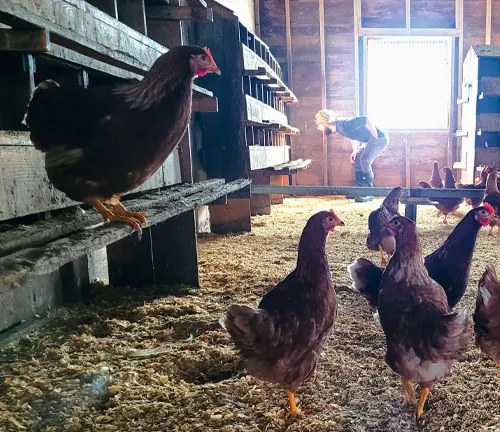
Eggcellent Layers
For those who enjoy a daily supply of fresh eggs, Rhode Island Reds are the perfect choice. Their consistent and prolific egg-laying abilities ensure that you’ll have an abundance of delicious brown eggs for your breakfast table.
Educational and Fun
Raising Rhode Island Reds can be an educational and enjoyable experience, especially for children. It teaches responsibility, animal husbandry, and provides a hands-on connection to the food they eat. These chickens can be more than just farm animals; they can become cherished family members.
Different Species
Production Rhode Island Reds
These birds are bred primarily for their exceptional egg-laying capabilities. They are selected for their ability to produce a high number of large brown eggs consistently.
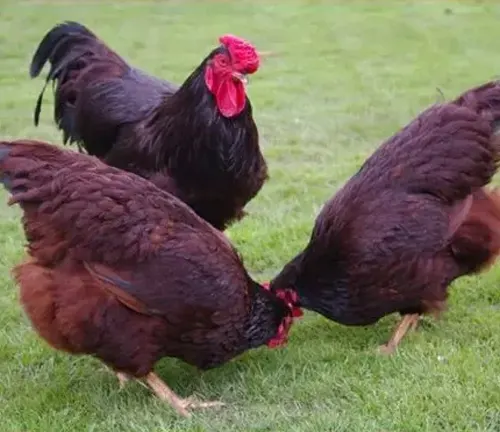

Heritage Rhode Island Reds
These birds are bred with a focus on preserving the breed’s historical traits and characteristics. They often have more vibrant and traditional plumage, and they maintain the breed’s original qualities.
Show Rhode Island Reds
These birds are bred for exhibition purposes and conform closely to the breed standard set by organizations like the American Poultry Association. Show RIRs have striking plumage and meet specific criteria for body shape and size.

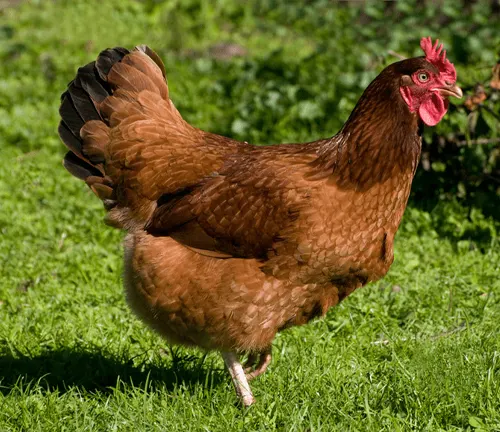
Industrial Rhode Island Reds
These birds are raised in commercial egg-laying operations and are selected for maximum egg production and feed efficiency. They are often a cross between different strains to optimize commercial traits.
Frequently Asked Question (FAQs)
- Are Rhode Island Reds good for beginners?
Yes, Rhode Island Reds are excellent choices for novice poultry keepers due to their friendly nature and easygoing temperament. - How many eggs can I expect from a Rhode Island Red hen?
On average, Rhode Island Red hens can lay between 200 to 300 brown eggs per year, depending on their individual health and care. - What is the lifespan of a Rhode Island Red chicken?
Rhode Island Reds can live for 5 to 8 years or more with proper care, making them a long-term addition to your flock. - Do Rhode Island Reds require special care compared to other chicken breeds?
While they have straightforward care requirements, like any chicken breed, they need a secure coop, balanced nutrition, and regular health check-ups to thrive. - Are Rhode Island Reds good for meat production too?
While primarily known for their egg-laying abilities, Rhode Island Reds also provide flavorful and tender meat, making them a dual-purpose breed. - Do Rhode Island Reds tolerate cold climates well?
Yes, these hardy chickens can withstand cold temperatures, thanks to their adaptable nature and dense plumage. - Where can I purchase Rhode Island Red chicks or hens?
You can find Rhode Island Reds at local hatcheries, farm supply stores, or through online breeders. Ensure you buy from reputable sources to get healthy birds. - What is the best way to care for Rhode Island Red chicks?
Keep them warm with a heat lamp, provide a clean and safe brooder, and offer a balanced chick starter feed for their growth and development. - Do Rhode Island Reds get along with other chicken breeds?
Generally, Rhode Island Reds are sociable and get along well with other chicken breeds in a mixed flock, provided there is enough space and resources for all. - How can I encourage Rhode Island Reds to lay more eggs?
To maximize egg production, ensure they have a balanced diet, access to clean water, and a stress-free environment. Proper lighting can also influence their laying patterns.





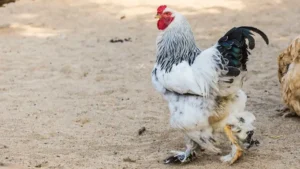





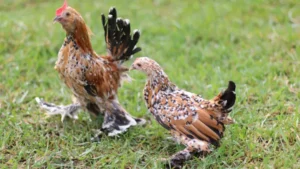
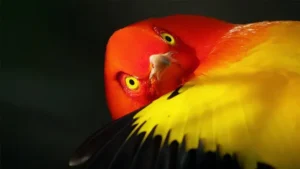

Leave your comment